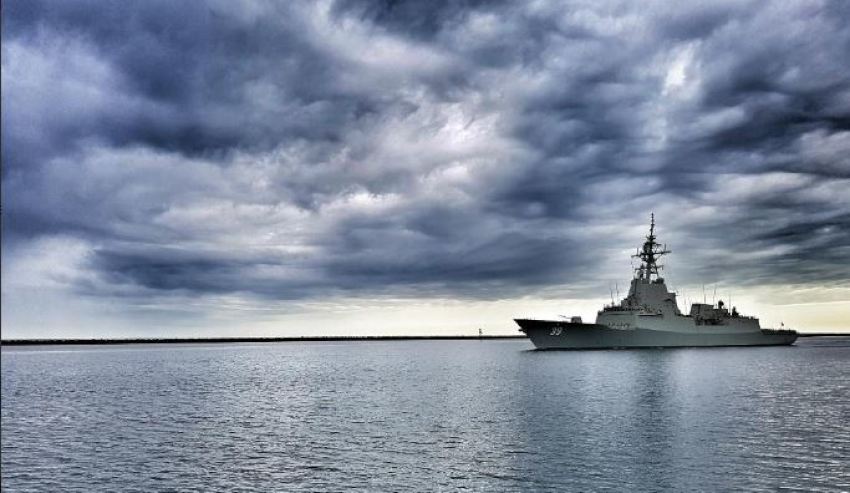Australia's focus on the Indo-Pacific region makes a great deal of sense, particularly given the positioning of key regional economic and strategic partners across what has been referred to as the 'Arc of Instability', which plays host to a range of traditional state and asymmetric economic and political challenges, however the growth of China and India and smaller nations surrounding them, combined with the importance of the Indo-Pacific as a pillar of the national, regional and global economy, now requires renewed Australian focus.
However, the question now becomes, given the geographic area of responsibility Australia will become increasingly responsible for and dependent on, is the Royal Australian Navy and the recapitalisation and modernisation programs currently underway enough for Australia to maintain its qualitative and quantitative lead over regional peers?
Additionally, concerns about the continuity and sustainability of Australia's shipbuilding workforce between the delivery of the final Hobart Class vessel, HMAS Sydney, and the beginning of the construction of the HMAS Hunter, the first of the $35 billion Hunter Class vessels, have once again reared their head, raising the question – could the answer lie in an expanded acquisition of Australia's leading-edge Hobart Class vessels?
Rule of thirds - maximising Australia's area-air and missile defence capabilities
Australia's existing fleet of three Hobart Class vessels provides a leading-edge, quantum leap in capability for the RAN – powered by the Aegis combat system and incorporating the state-of-the-art phased array radar, AN/SPY 1D(V), will provide an advanced air defence system capable of engaging enemy aircraft and missiles at ranges in excess of 150 kilometres.
However, the changing regional balance of power and the increasing proliferation of advanced anti-ship cruise and ballistic missile systems places increased pressure on the limited number of Hobart Class vessels. This is where the concept of the 'rule of thirds' comes into play, which describes the deployment and usage of a military organisation or asset. The 'rule of thirds' outlines that one third of the total military forces involved should be available for operations, one-third should be preparing for operations and the final third, having been on operations, should be recuperating – ideally with units and individuals that regularly will rotate through each of the three phases.
Accordingly, Australia's existing fleet of three Hobart Class destroyers and the larger task group assets, including the Canberra Class and future Supply Class auxiliary fleet oilers, deploy with limited area-air and missile defence shields in increasingly contested tactical and strategic environments.
Enter a doubling of the existing fleet – expanding the Hobart Class acquisition to include an additional three vessels would serve as a one-for-one replacement for the ageing Adelaide Class frigates and would enable the deployment of large, self-sustaining Australian task groups with multiple redundant area-air and missile defence capabilities, while also expanding the Navy's role within the broader 'joint force' ADF of the future.
Saving jobs and expanding naval shipbuilding capabilities
With the expected completion of HMAS Sydney and entry into service in late 2019-early 2020, the shipbuilding workforce in Adelaide will be split between the Arafura Class program prior to its transition to the CIVMEC yards in Henderson in Western Australia and the prototyping phase for the $35 billion Hunter Class program, expected to begin in the early 2020s.
This same workforce capability gap served as one of the key limiting factors impacting building delivery and success during the early stages of the Hobart Class program – with a minimum gap of between 18-and-24 months between delivery and construction commencing the workforce will struggle to retain skilled shipbuilders, presenting problems for the future Hunter and Attack Class programs.
Additionally, increasing the unit acquisition of the Hobart Class will serve to increase the economies of scale – reducing unit cost while supporting increased shipbuilding industry growth and maintaining a skilled workforce – enabling for the transition of the later builds to Henderson in WA to make way for the Hunter Class program.
Finally, the expanded acquisition of a 'Block 2' variant would enable the lessons learned throughout the 'Block 1' phase to reduce delivery delays, cost overruns and also support the integration of Australian industry with the US Navy's FFG(X) program by supporting the block build of the US Navy's own future frigate program, in which Navantia has presented the F-100 Alvaro De Bazan Class, upon which the Hobart Class is based – enhancing allied industry co-operation and interoperability.
Additionally, the increasing proliferation of advanced anti-ship ballistic and anti-ship cruise missiles, combined with the growing prominence of naval aviation – again led by China, but also pursued by Japan and India – is serving to raise questions about the size and the specialised area-air defence, ballistic missile defence, power projection and sea control capabilities of the RAN.
Australia is defined by its relationship and access to the ocean, with strategic sea-lines-of-communication supporting over 90 per cent of global trade, a result of the cost effective and reliable nature of sea transport. Indo-Pacific Asia is at the epicentre of the global maritime trade, with about US$5 trillion worth of trade flowing through the South China Sea and the strategic waterways and choke points of south-east Asia annually.
The Indian Ocean and its critical global sea-lines-of-communication are responsible for more than 80 per cent of the world's seaborne trade in critical energy supplies, namely oil and natural gas, which serve as the lifeblood of any advanced economy.
Traditionally, Australia has focused on a platform-for-platform acquisition program – focused on replacing, modernising or upgrading key capabilities on a like-for-like basis without a guiding policy, doctrine or strategy limiting the overall effectiveness, survivability and capability of the RAN.
Let us know your thoughts in the comments section below, or get in touch with This email address is being protected from spambots. You need JavaScript enabled to view it. or This email address is being protected from spambots. You need JavaScript enabled to view it..









